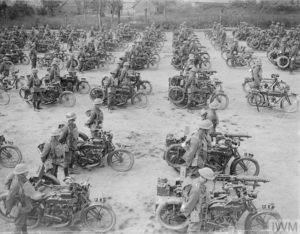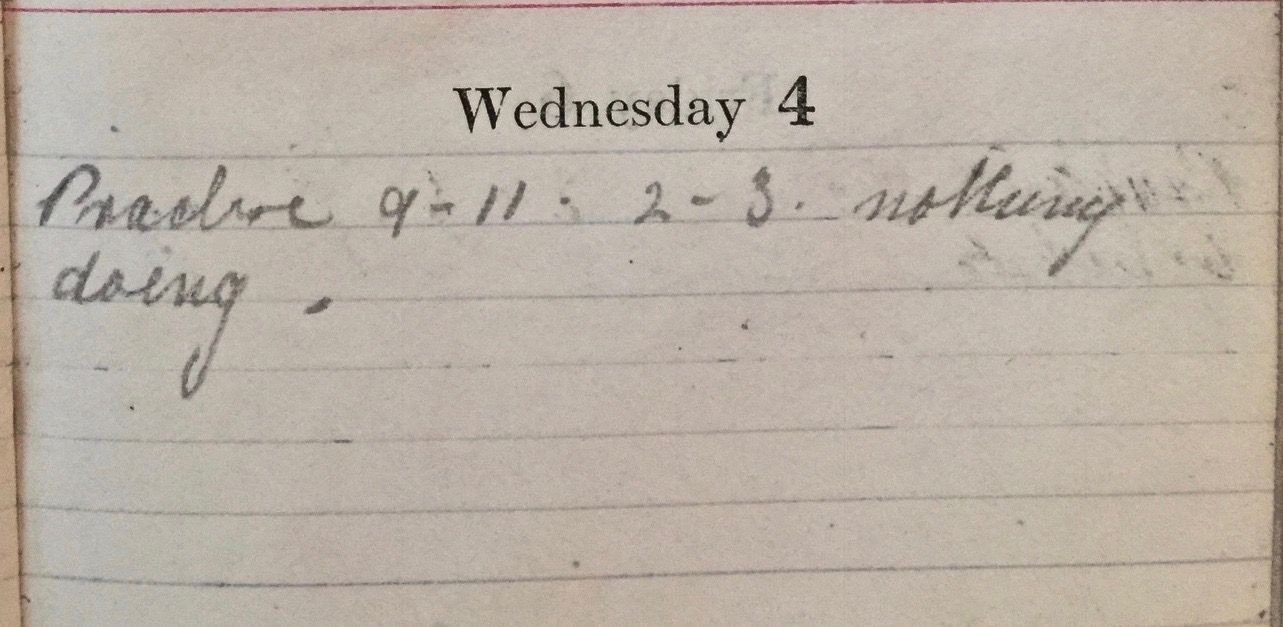Wednesday September 4th, 1918
Band Practice 9am till 11am and 2pm to 3pm. Nothing doing.
Machine Guns in WWI
At the outbreak of WWI, every Infantry Battalion had a small machine gun section. The section comprised a subaltern, 11 men and two Vickers’ machine gunsº. One machine gun could fire 500 rounds a minute and was equivalent to 40 skilled riflemen. By February 1915, the quota of machine guns per Battalion was doubled.

Recognizing the importance of machine guns and the unique tactics required to deploy them effectively, the Machine Gun Corps (MGC) was created in October 1915. The Corps established its own schools and training centres, such as the one at Grantham, England.
The MGC would eventually consist of infantry Machine Gun Companies, cavalry Machine Gun Squadrons and Motor Machine Gun Batteries.¹ The photograph shows an inspection of the 24th Motor Machine Gun Battery at Dieval in June 1918. The motorbikes are Clyno 744 cc twin cylinder machines fitted with a sidecar and Vickers machine-guns. *
Existing Vickers guns and their crews were therefore pulled out of the Battalions into the new Corps which operated at Brigade level. Their fire power within the Battalions was replaced by the lighter, more mobile Lewis Guns.¹
By July 1918, every Battalion had 36 Lewis Guns. While this number is not being increased, the BWD today notes that the number of soldiers able to operate a Lewis Gun within a Battalion is to be 176. This is more than 20% of its manpower and clearly demonstrates the increased reliance on this weapon.
Both Vickers and Lewis Guns will be used well beyond the end of the war, into the 1960s and 1950s respectively.
9th Battalion War Diary – 4th September 1918 – Haudricourt
Training as per programme. TAB inoculation. The GOC has laid down the minimum number of men per Battalion to be fully trained in the use of the Lewis Gun as 176, the necessary number of men to be put into training forthwith. 3 OR are struck off the effective strength of the Bn on admission to various hospitals whilst on leave in UK from various duties.
References & Further Reading
º In the late 1890s Vickers had bought the Maxim company and over the following few years worked to improve the design. While Maxim guns were used by the British Army at the outbreak of war, they were soon replaced by the upgraded Vickers’ design.
¹ Machine Gun Corps on the Long Long Trail
² Weapons of War, on First World War
³ Vickers Machine Gun on Wikipedia
* Q 10326, copyright Imperial War Museums


